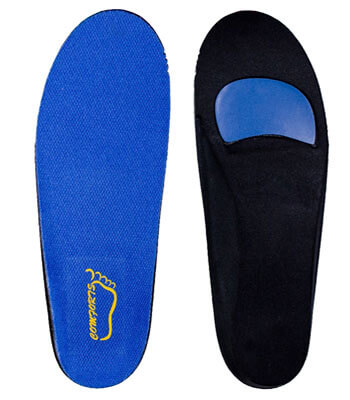How to Choose Types of Insoles for You
Choosing the right insoles can make a
significant difference in your overall comfort and foot health. Whether you're
an athlete, someone who spends long hours on their feet, or simply seeking more
comfort in your everyday shoes, the right insoles can provide the support you
need. Here’s a guide to help you choose the perfect insoles for your needs.
- Understand Your Needs
- Arch Support: For flat feet or high arches.
- Pain Relief: To alleviate discomfort from conditions like plantar
fasciitis or arthritis.
- Shock Absorption: For high-impact activities such as running or
jumping.
- mproved Fit: To fill extra space in shoes for a better fit.
- Types of Insoles
- Comfort Insoles: These provide cushioning and are ideal for
everyday use. They are usually made of soft materials like foam or gel.
- Support Insoles: Designed to offer structural support, these are
perfect for people with flat feet or high arches. They often have a firmer
construction to maintain foot alignment.
- Orthotics Insoles: These are tailored to fit your feet and address
specific medical conditions. Custom orthotics insoles are typically prescribed
by a podiatrist.
- Activity-Specific Insoles: Some insoles are designed for specific
activities such as running, hiking, or skiing. These insoles provide the
appropriate support and cushioning needed for the activity.
- Insoles Material
- Consider Your Foot Arch Type
-
Medium Arch (Normal Arch):
According to the measurement of the arch instrument, the arch index of a normal person is between 0.21 and 0.28. If observed with the naked eye, the Achilles tendon of the foot will appear vertical, and the wear marks of the sole are evenly distributed on the sole and sole of the foot.
Normal arches are suitable for most insoles that will work and do not require too much support or assistance.


-
Low Arch (Flat Feet):
If the arch index is greater than 0.28, the arch is collapsed, which is commonly known as flat feet. Visible to the naked eye, the Achilles tendon area will appear concave, and the wear marks on the soles are concentrated on the inside of the foot.
The low arch needs to look for insoles with good arch support to prevent overpronation.


-
High Arch
When the arch index is less than 0.21, it means high arched foot. At this time, the Achilles tendon will show an outward concave shape, and the wear of the sole is concentrated on the outside.
"Shock-absorbing" insoles are suitable for foot arches that are too high to relieve the unbalanced force application points of the feet and avoid foot pain and deformation.




- Fit and Size
- Trial and Error
- Consult a Professional
Before selecting insoles, it's crucial to
understand what you need them for. Are you looking for additional comfort, or
do you have a specific foot condition that requires extra support? Common
reasons for using insoles include:
There are several types of insoles, each designed for different purposes:
Insoles come in various materials, each
offering different benefits:
● Foam: Provides cushioning and comfort, ideal for everyday wear.
● Gel: Excellent for shock absorption and pressure distribution.
● Cork: Offers good support and conforms to the shape of your foot
over time.
● Leather: Durable and comfortable, often used in high-quality
insoles for dress shoes.
Knowing your foot arch type is essential in choosing the right insoles:
Whether the size of the orthotic insole
fits the foot is an important factor affecting the correction effect. They
should not alter the fit of your shoes to the point of discomfort. Most insoles
are available in a range of sizes, and some can be trimmed to fit. When
purchasing corrective insoles, it is recommended to go to the site to compare
according to your shoe size to ensure that the corrective insoles fit the feet
and will not compress the instep.
Finding the perfect insoles may require
trying a few different types. Start with insoles that address your primary
needs, and don’t hesitate to switch if they don’t feel right. Your comfort and
foot health are worth the effort.
If you have persistent foot pain or
specific medical conditions, consult a podiatrist. They can provide
professional advice and might recommend custom orthotics tailored to your
needs.
There are various types of arch insoles on
the market, both thick and thin. Some people may mistakenly think that the
thicker the design, the better the shock-absorbing effect. Only by choosing
patented or specially designed corrective insoles can the arch pad truly exert
its shock-absorbing effect and be more stable.
Kun Huang produces POLIYOU insoles that
create a good environment for shoes, bring comfort and health to the feet, and
become another layer of protection for the body. POLIYOU insoles have pushed
footwear technology forward a BIG step. Welcome to contact us to custom
insoles!
